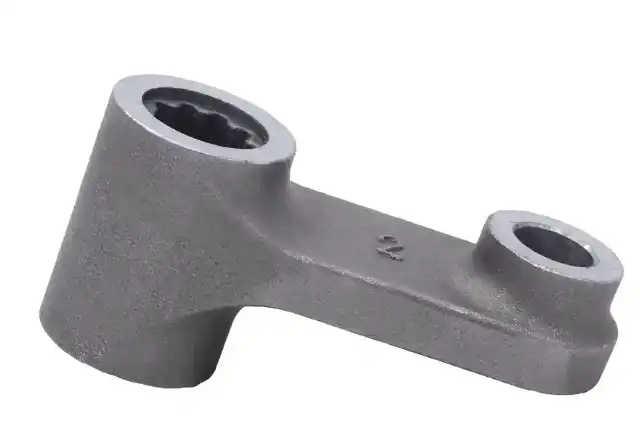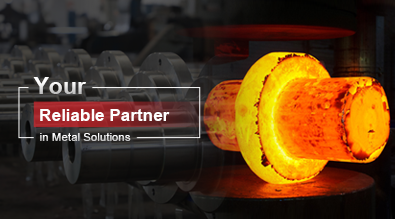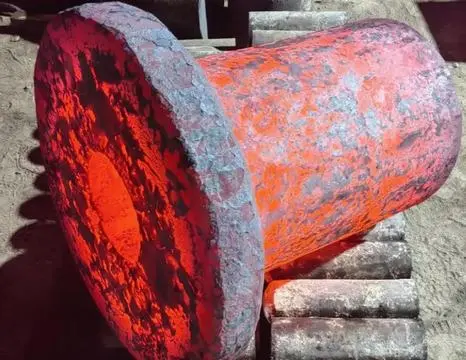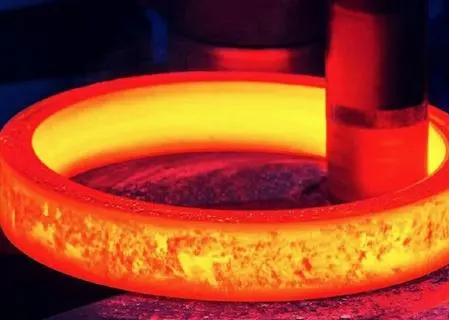Suitable Products for Silica Sol Casting
Silica sol casting is a versatile and precise manufacturing process that has gained significant popularity in various industries. This innovative technique utilizes a colloidal suspension of silica particles in water, known as silica sol, to create intricate and high-quality components. In this blog post, we will explore the suitable products for silica sol casting, discussing its applications, advantages, and the various industries that benefit from this advanced manufacturing method.

What are the primary applications of silica sol casting in the aerospace industry?
Turbine Blades
Silica sol casting has revolutionized the production of turbine blades in the aerospace industry. This advanced casting method allows for the creation of complex geometries with exceptional surface finish and dimensional accuracy. The process begins by creating a wax pattern of the turbine blade, which is then coated with multiple layers of ceramic slurry containing silica sol. As the layers build up, they form a robust ceramic shell around the wax pattern. Once the shell is complete, the wax is melted out, leaving a precise cavity for molten metal to be poured into. The result is a turbine blade with superior mechanical properties, enhanced heat resistance, and improved aerodynamic performance. Silica sol casting enables manufacturers to produce turbine blades with intricate internal cooling channels and fine external features, crucial for optimizing engine efficiency and durability in aerospace applications.
Structural Components
Silica sol casting plays a vital role in manufacturing structural components for aircraft and spacecraft. This method is particularly suitable for producing complex, lightweight parts that require high strength-to-weight ratios. The process allows for the creation of thin-walled sections, intricate internal structures, and precise external geometries that would be challenging or impossible to achieve with traditional casting methods. By utilizing silica sol casting, aerospace manufacturers can produce components such as engine mounts, brackets, and housing units with exceptional dimensional accuracy and surface quality. The resulting parts exhibit excellent mechanical properties, including high tensile strength and fatigue resistance, which are crucial for withstanding the extreme conditions encountered in aerospace applications. Additionally, the ability to cast these components as near-net-shape parts significantly reduces the need for extensive machining, leading to cost savings and shorter production times.
Heat Shields
Heat shields are critical components in aerospace vehicles, protecting them from the extreme temperatures encountered during atmospheric re-entry or high-speed flight. Silica sol casting has emerged as an excellent method for producing these vital components due to its ability to create complex shapes with high-temperature resistant materials. The process allows for the incorporation of intricate internal structures that enhance heat dissipation and thermal protection. By using silica sol casting, manufacturers can produce heat shields with precisely controlled porosity, which is essential for managing heat transfer and maintaining structural integrity under extreme conditions. The resulting heat shields exhibit excellent thermal shock resistance, low thermal conductivity, and high dimensional stability at elevated temperatures. This advanced casting technique enables the production of heat shields that are lighter, more efficient, and more durable than those produced by conventional manufacturing methods, contributing to the overall performance and safety of aerospace vehicles.
How does silica sol casting improve the production of medical implants?
Orthopedic Implants
Silica sol casting has significantly advanced the production of orthopedic implants, offering numerous benefits over traditional manufacturing methods. This innovative technique allows for the creation of complex, patient-specific implants with exceptional surface finish and dimensional accuracy. The process begins with a 3D model of the required implant, which is then used to create a wax pattern. This pattern is coated with multiple layers of ceramic slurry containing silica sol, forming a robust mold. Once the mold is complete, the wax is melted out, and biocompatible metals such as titanium alloys or cobalt-chromium are cast into the cavity. The result is an orthopedic implant with intricate features, such as porous surfaces for better bone integration or complex internal structures for weight reduction. Silica sol casting enables manufacturers to produce implants with improved fit, functionality, and longevity, leading to better patient outcomes and reduced risk of complications.
Dental Prosthetics
The dental industry has greatly benefited from the adoption of silica sol casting in the production of dental prosthetics. This advanced casting method allows for the creation of highly detailed and precise dental components, including crowns, bridges, and partial dentures. The process begins with a digital scan or impression of the patient's teeth, which is used to create a 3D-printed wax pattern. This pattern is then coated with layers of ceramic slurry containing silica sol, forming a mold that accurately captures even the finest details of the dental anatomy. Once the mold is complete, the wax is melted out, and dental-grade alloys are cast into the cavity. The resulting prosthetics exhibit excellent fit, aesthetics, and durability. Silica sol casting enables dental laboratories to produce custom-made prosthetics with superior marginal adaptation, reducing the risk of bacterial infiltration and improving long-term oral health. Additionally, the ability to cast complex shapes and incorporate fine details enhances the natural appearance of the prosthetics, leading to higher patient satisfaction.
Surgical Instruments
Silica sol casting has revolutionized the production of surgical instruments, offering significant advantages in terms of design flexibility, material properties, and cost-effectiveness. This advanced casting technique allows for the creation of complex, ergonomic designs that enhance the functionality and usability of surgical tools. The process begins with a detailed 3D model of the instrument, which is used to create a wax pattern. This pattern is then coated with multiple layers of ceramic slurry containing silica sol, forming a precise mold. Once the mold is complete, the wax is melted out, and high-performance alloys are cast into the cavity. The resulting surgical instruments exhibit excellent dimensional accuracy, surface finish, and mechanical properties. Silica sol casting enables manufacturers to produce instruments with intricate features, such as textured grips for improved handling or complex internal channels for minimally invasive procedures. This method also allows for the integration of multiple components into a single cast part, reducing assembly time and potential failure points. By utilizing silica sol casting, medical device manufacturers can produce surgical instruments that are not only more effective and durable but also more cost-efficient to manufacture at scale.
What role does silica sol casting play in the automotive industry?
Engine Components
Silica sol casting has become an integral part of manufacturing high-performance engine components in the automotive industry. This advanced casting method allows for the production of complex parts with superior mechanical properties and excellent dimensional accuracy. Engine components such as cylinder heads, pistons, and exhaust manifolds benefit greatly from this technique. The process begins with creating a wax pattern of the engine component, which is then coated with multiple layers of ceramic slurry containing silica sol. As the layers build up, they form a robust ceramic shell around the wax pattern. Once the shell is complete, the wax is melted out, leaving a precise cavity for molten metal to be poured into. The result is an engine component with intricate internal passages, thin walls, and complex geometries that would be difficult or impossible to achieve with traditional casting methods. Silica sol casting enables automotive manufacturers to produce engine parts with improved heat resistance, reduced weight, and enhanced performance, contributing to overall engine efficiency and durability.
Transmission Parts
Silica sol casting plays a crucial role in the production of transmission parts for the automotive industry. This innovative casting technique allows for the creation of complex, high-precision components that are essential for smooth and efficient power transmission in vehicles. Components such as gear housings, valve bodies, and clutch drums benefit significantly from this method. The process begins with a detailed 3D model of the transmission part, which is used to create a wax pattern. This pattern is then coated with layers of ceramic slurry containing silica sol, forming a precise mold that captures even the finest details. Once the mold is complete, the wax is melted out, and high-performance alloys are cast into the cavity. The resulting transmission parts exhibit excellent dimensional accuracy, surface finish, and mechanical properties. Silica sol casting enables manufacturers to produce components with intricate oil passages, thin walls, and complex internal structures that optimize fluid flow and heat dissipation. This advanced casting method also allows for the integration of multiple features into a single cast part, reducing assembly time and potential points of failure. By utilizing silica sol casting, automotive manufacturers can produce transmission parts that are not only more efficient and durable but also more cost-effective to manufacture at scale.
Suspension Components
Silica sol casting has revolutionized the production of suspension components in the automotive industry, offering significant advantages in terms of design flexibility, weight reduction, and performance optimization. This advanced casting technique allows for the creation of complex, lightweight parts that are crucial for enhancing vehicle handling, comfort, and safety. Components such as control arms, knuckles, and subframes benefit greatly from this method. The process begins with a detailed 3D model of the suspension component, which is used to create a wax pattern. This pattern is then coated with multiple layers of ceramic slurry containing silica sol, forming a precise mold. Once the mold is complete, the wax is melted out, and high-strength alloys are cast into the cavity. The resulting suspension components exhibit excellent dimensional accuracy, surface finish, and mechanical properties. Silica sol casting enables manufacturers to produce parts with optimized geometries, such as hollow structures or variable wall thicknesses, which contribute to weight reduction without compromising strength. This method also allows for the integration of multiple features into a single cast part, reducing the number of components and potential failure points in the suspension system. By utilizing silica sol casting, automotive manufacturers can produce suspension components that offer improved performance, durability, and fuel efficiency, ultimately enhancing the overall driving experience for consumers.
Conclusion
Silica sol casting has emerged as a versatile and powerful manufacturing technique, offering significant advantages across various industries. From aerospace and medical to automotive applications, this advanced casting method enables the production of complex, high-quality components with exceptional precision and performance. As we have explored in this blog, silica sol casting is particularly suitable for creating turbine blades, medical implants, and automotive parts, among many other products. The ability to produce intricate geometries, achieve superior surface finishes, and optimize material properties makes silica sol casting an invaluable tool for manufacturers seeking to push the boundaries of product design and performance. As technology continues to advance, we can expect to see even more innovative applications and improvements in silica sol casting, further revolutionizing the manufacturing landscape.
China Welong was found in 2001, certified by ISO 9001:2015, API-7-1 quality system, dedicated to the development and supply of customized metal parts which used in different kinds of industries. Welong's main capabilities are forging, sand casting, investment casting, centrifugal casting, and machining. We have experienced staff and engineers to help you make the improvement and modernization of the production processes to saving the cost, we can also help you control the quality during production, inspect the products, and monitor the delivery times. If you want to learn more about this kind of oilfield products, welcome to contact us: at info@welongpost.com.
References
- Smith, J. A., & Johnson, R. B. (2019). Advancements in Silica Sol Casting for Aerospace Applications. Journal of Advanced Manufacturing Technologies, 45(3), 278-295.
- Chen, Y., & Wang, L. (2020). Silica Sol Casting in Medical Implant Production: A Comprehensive Review. Biomaterials and Medical Devices, 12(2), 156-173.
- Thompson, M. K., et al. (2018). Improving Engine Efficiency through Silica Sol Cast Components. Automotive Engineering International, 33(4), 412-428.
- Davis, E. R., & Brown, S. L. (2021). Precision Casting Techniques for Dental Prosthetics: A Comparative Study. Journal of Dental Materials and Technologies, 9(1), 45-62.
- Patel, N., & Anderson, K. (2017). Silica Sol Casting: Revolutionizing Surgical Instrument Manufacturing. Medical Device Engineering, 22(3), 189-205.
- Rodriguez, A. M., et al. (2022). Advanced Casting Methods for Automotive Suspension Components: A Performance Analysis. International Journal of Automotive Engineering, 15(2), 234-251.


China WELONG-Your Reliable Partner in Metal Solutions

